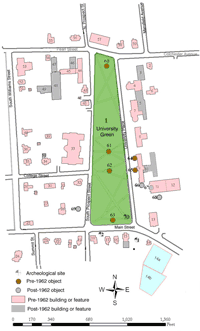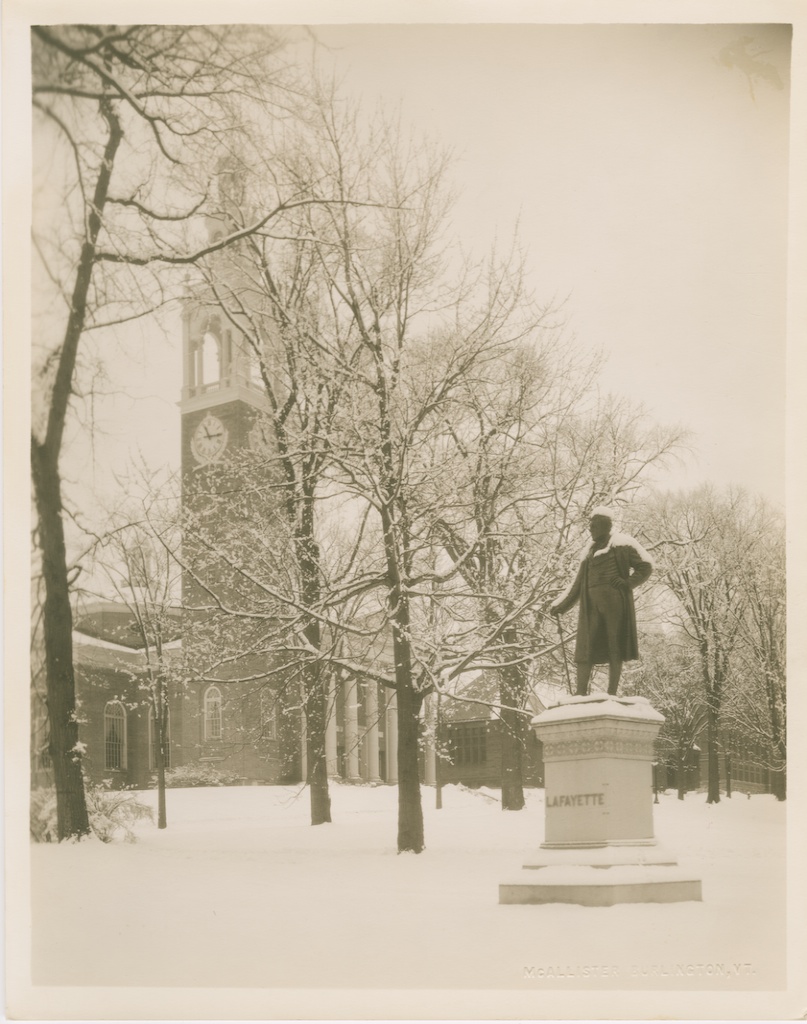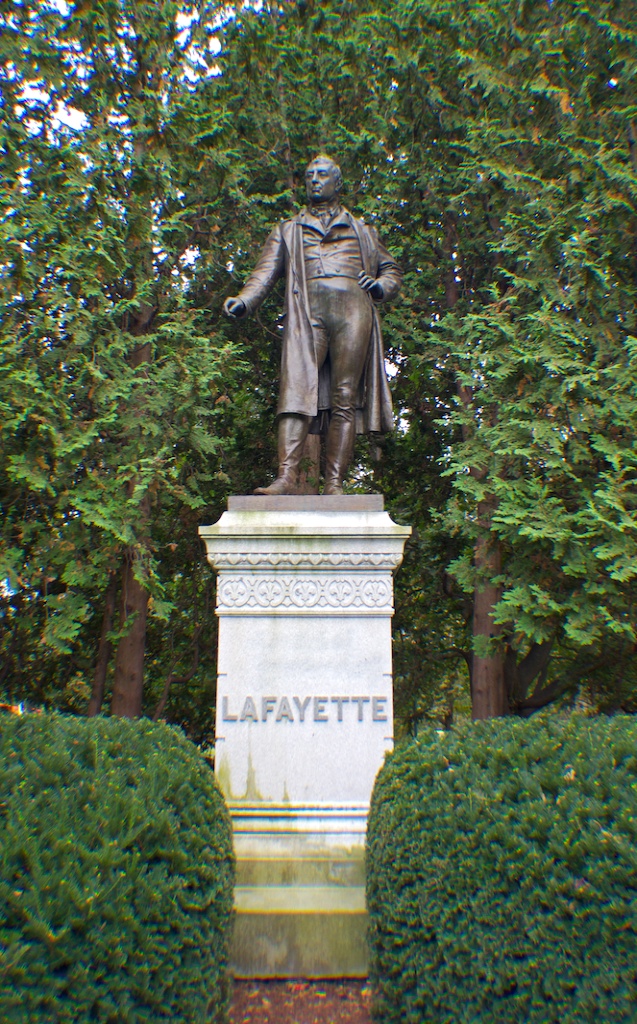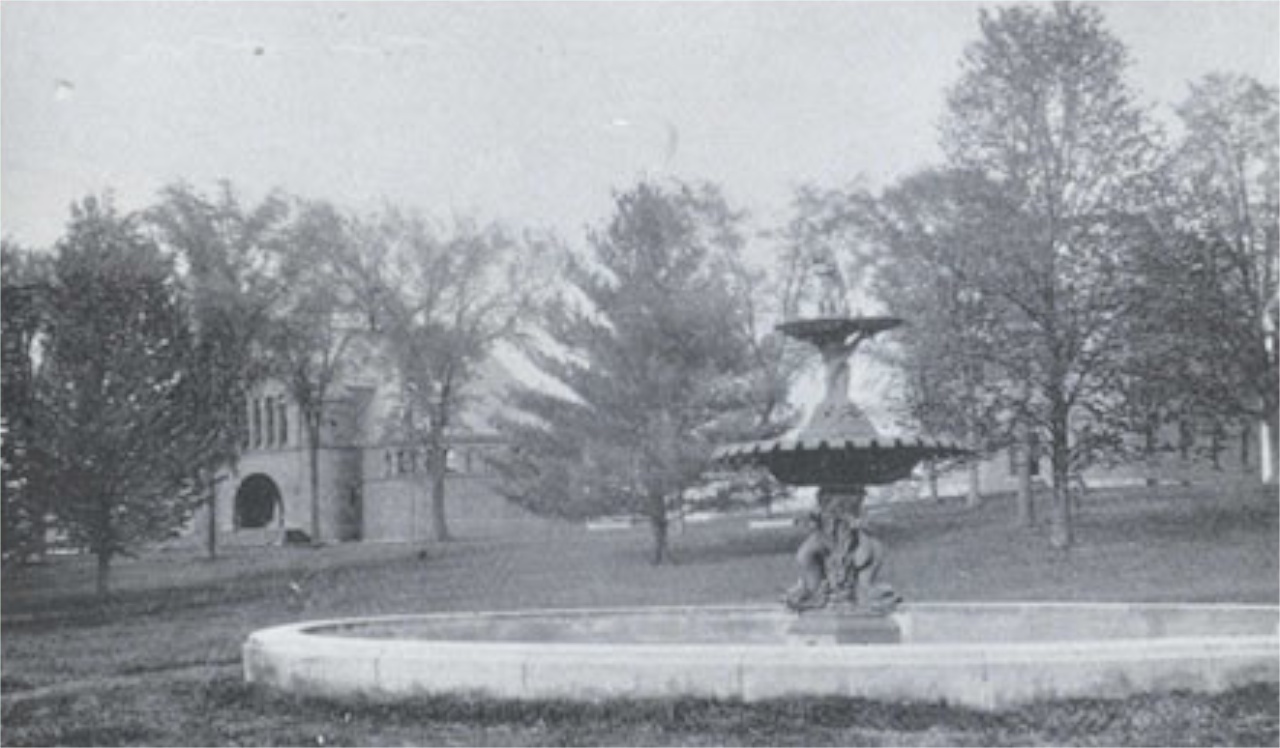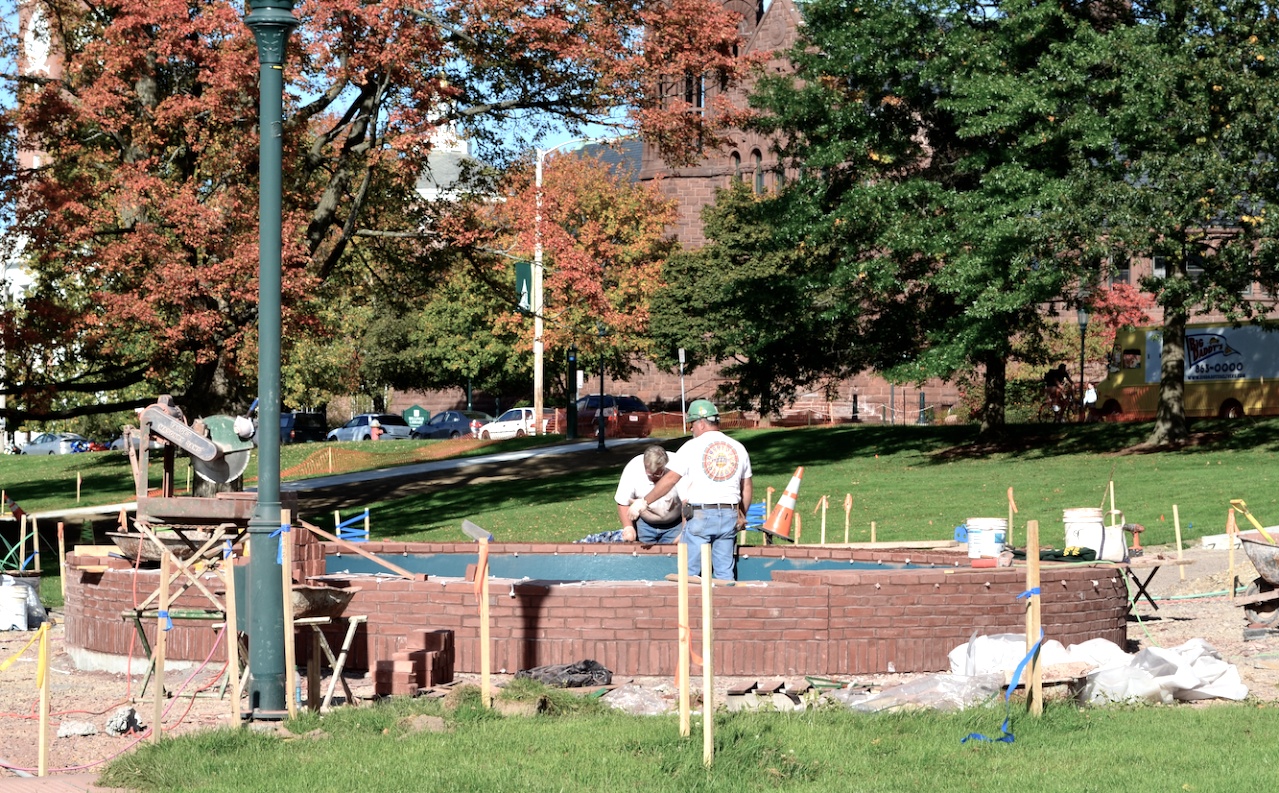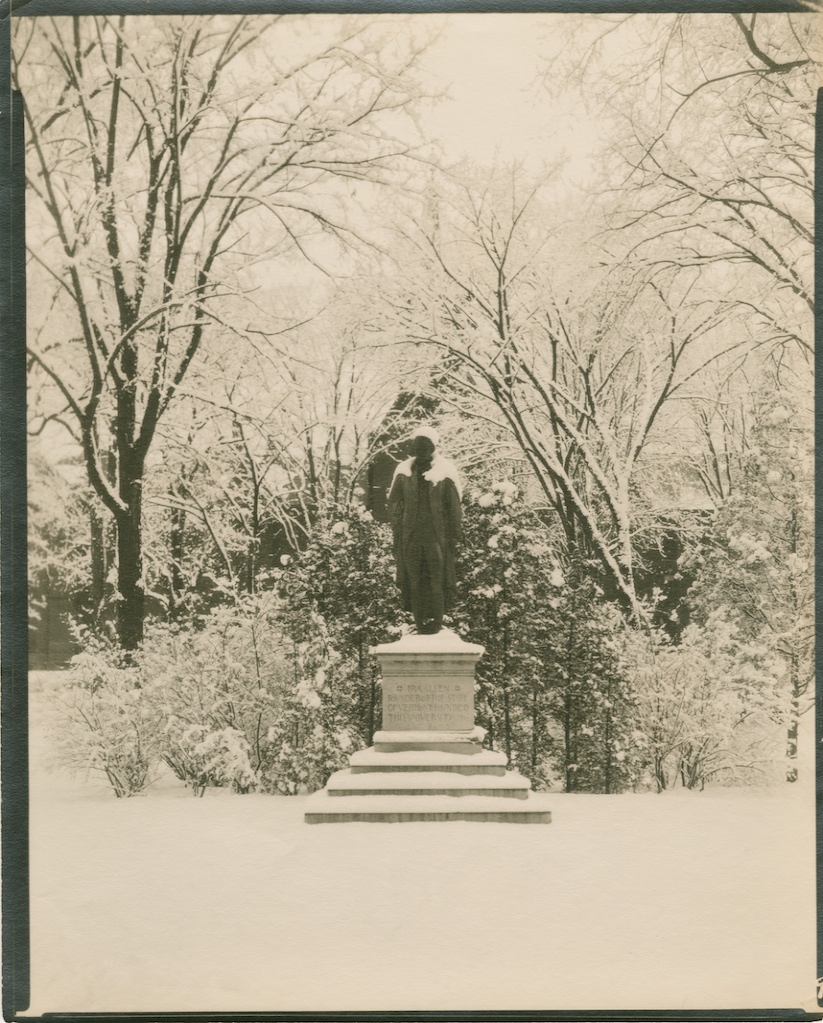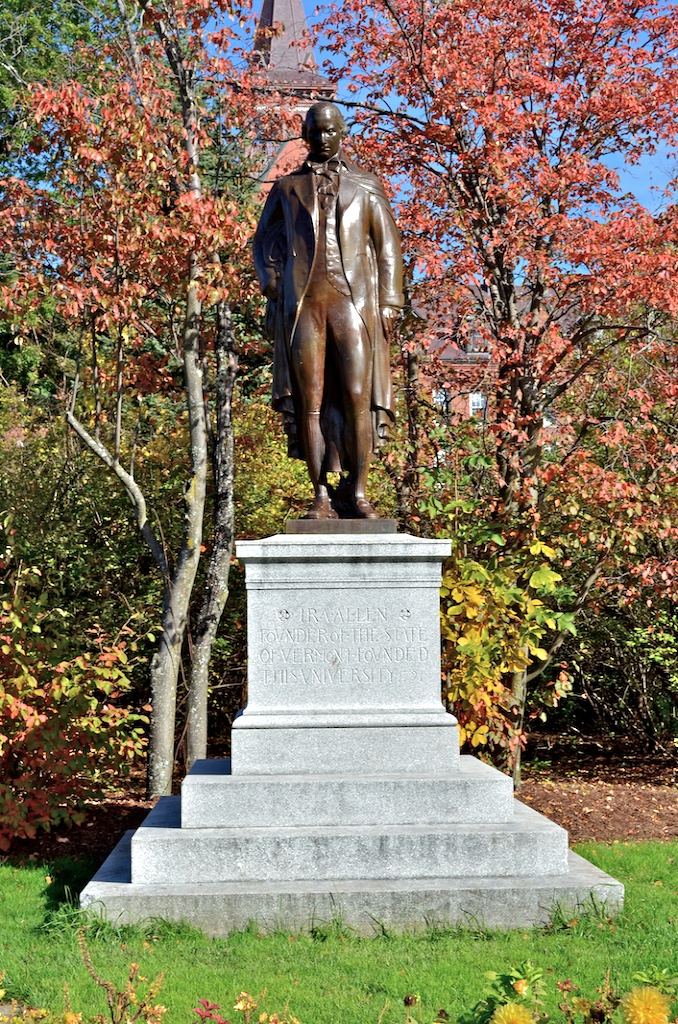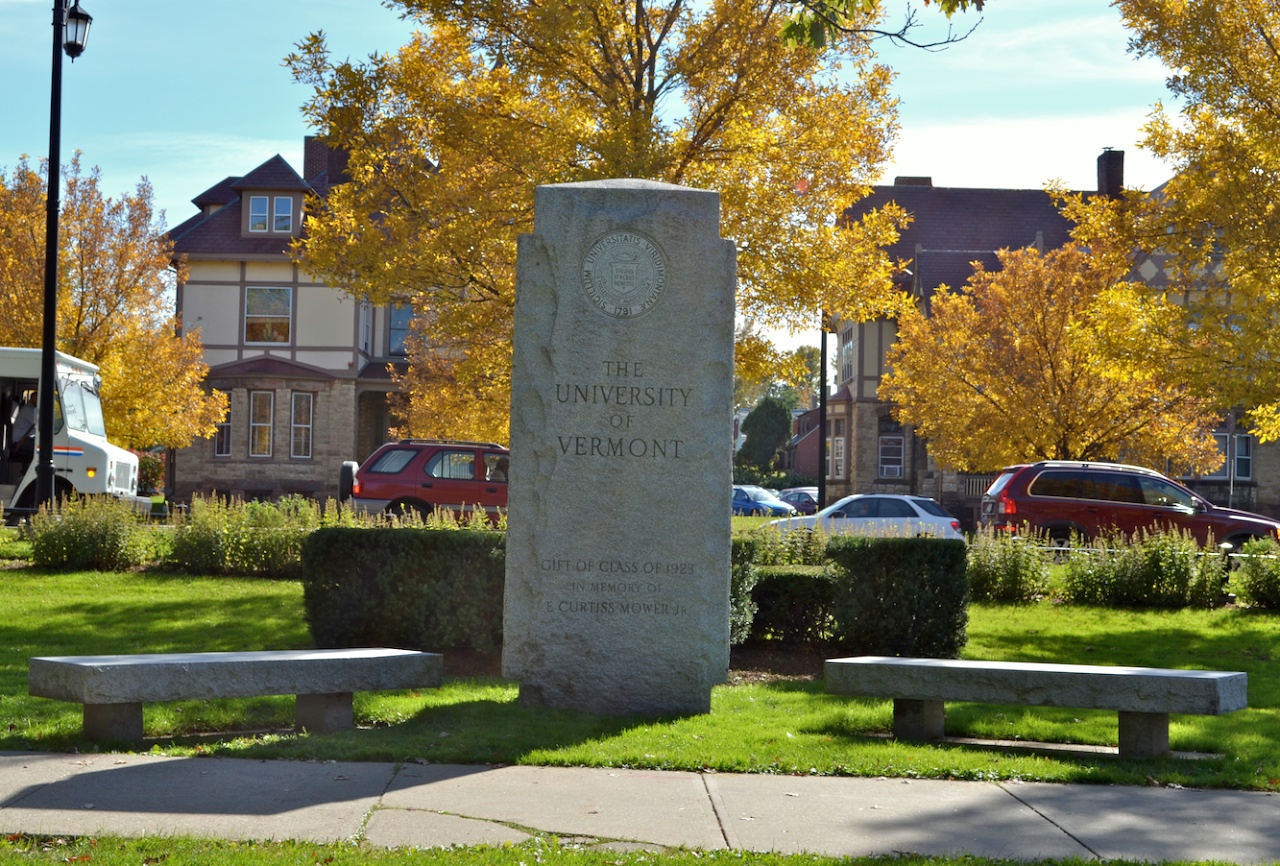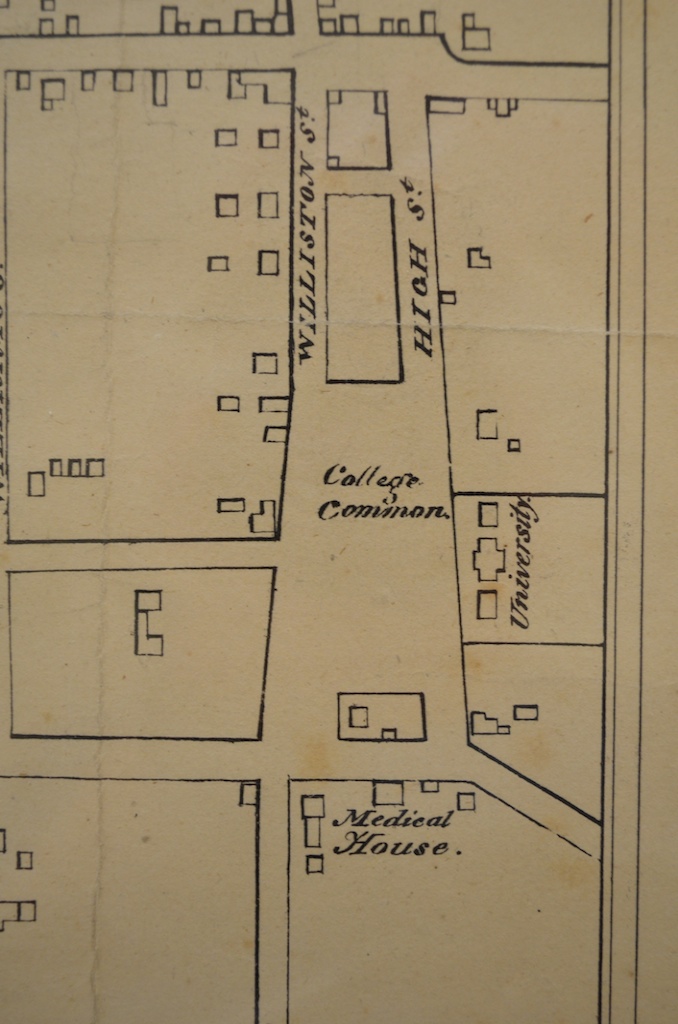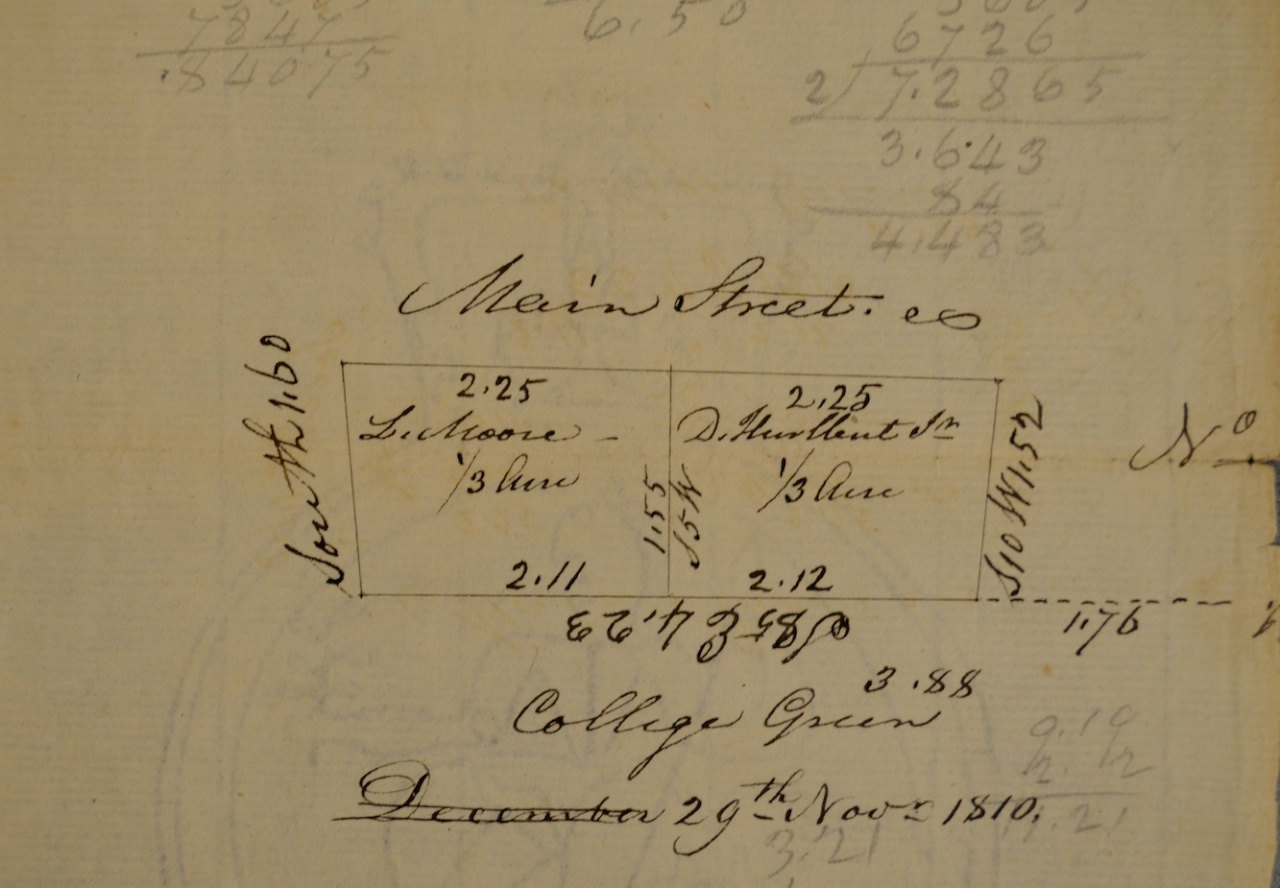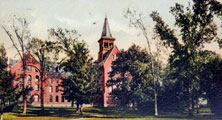 |
University Green Area Heritage StudyHistoric Burlington Research Project - HP 206Historic Preservation Program - University of Vermont |
|||||||||||||
|
The University Greenby Melissa Smith The University Green, also known as the “College Green,” has served as a meaningful representation of the campus community and is reflective of its long and varied history. While currently used as a campus park, the Green has served not only as a means of commemorating early leaders and founders of the University, but has also served as an important rallying point for dissent and student protest. The Green is thus representative of the dynamic nature of change and evolution in respect to institutions of higher education and remains an intriguing symbolic intersection of the present and the past. As a testament to the rural nature of Burlington during this period, the turnstiles were likely added as a way of preventing grazing livestock from entering the park. (7) UVM, in partnership with Shelburne Farms, grazed eleven sheep on the green from June until October of 2011 in celebration of this history and as a means of advertising seasonal historic tours of campus. (8) By 1893 the Green boasted groves of tamarack, pine, and cedar as well as a string of elms, which encircled the entire park. (9) Faculty, staff, and students planted the trees, many of which were planted in commemoration of the National Centennial of 1876. (10) Unfortunately, by 1970, Dutch elm disease had ravaged the park, resulting in the removal of almost all of these breathtaking trees. (11) While the University attempted to treat the remaining American elms, oaks, pines, ornamentals, and disease-resistant varieties of elm were planted on the Green. (12) By the late twentieth-century the Green had become a rallying point for student political protest. In 1985, the student community began to question UVM investments, specifically those involving companies associated with South Africa. (13) In response to a trustee vote in October of 1985 not to divest, a shantytown known as “Crossroads” was built on the south end of the Green as a representation of the difficult living conditions that black South African citizens suffered as a result of Apartheid. (14) “Crossroads” which grew to include three buildings, nine tents, and a chicken coop, was dismantled in December after the board of trustees agreed to sell all $7.7 million in stock over the course of 18 months. (15) However, as a continuing reminder of the movement, students constructed a “sculpture” around the Class of 1923 Marker incorporating a peace-sign frame around the carved inscription “University of Vermont Founded 1791” and listing the corporations linked to the university that were involved in South Africa. (16) The “sculpture” was to remain in place until all shares had been sold. (17) In 1991 the Green was again center stage to a student protest movement when it was turned into another shantytown coined the “Diversity University.”(18) Diversity University was created in support of the second occupation of the Waterman building, in which twenty-two students dissatisfied with the University’s commitment to cultural diversity blocked access to administrative offices and the office of President George Davis. (19) The students demanded commitment to improving the plight of minority students and increasing campus awareness of minority issues and racial prejudice, including improving minority student and faculty numbers. (20) Diversity University specifically sought to support this movement by providing alternative instruction in an attempt to bridge the gap in the University of Vermont’s curriculum and serve as one means of keeping the issue of cultural diversity visible to the wider campus and city community. (21) Diversity University was able to maintain its occupation of the Green until November of 1991 when it fell victim to arson. (22) The Marquis de Lafayette StatueThe Lafayette Statue was dedicated on June 26, 1883. (23) Some accounts claim that nearly 10,000 people were in attendance. (24) The statue was a gift of John P. Howard and was meant to commemorate General Lafayette’s laying of the cornerstone of the Old Mill building in 1825. (25) The statue, cast in bronze in Philadelphia, was the work of prominent artist J.Q.A. Ward and is estimated to have cost between $22,000 and $25,000. (26) The Lafayette Statue, which weighs approximately1800 pounds,(27) was first placed in the center of the Green facing College Street as a visible reminder of the connection between General Lafayette and Old Mill. (28) In 1921, the Lafayette Statue was moved to its present location on the north side of the Green to make room for the Ira Allen Statue. (29) While the statue remains much as it was in 1883, it is currently missing its cane.
Lafayette Statue, circa 1930s Louis L. McAllister photograph, Courtesy of UVM Lbrary Special Collections
Statue of Lafayette. Photograph by author, October 16, 2011 The Howard FountainThe Howard Fountain, first described in The Cynic in May of 1883, was a gift of John P. Howard, a great benefactor of the University. (30) Replacing an older fountain that was located at the current site of the Ira Allen Statue, the Howard Fountain was located further to the north and centered on the Green. (31) The cast-iron fountain remained at the center of the Green for approximately one-hundred years when it was removed and replaced by a modern fountain which was often referred to as “…a birdbath or bathtub…” by students and faculty. (32) In 1987, the senior class decided to restore the Howard Fountain and return it to its place at the center of the Green as a class gift. (33) The Barre, Vermont firm of Smith, Whitcomb and Cook completed the restoration of the fountain by referencing a similar cast iron fountain located at the Lake View Cemetery near North Beach. (34) In the fall of 2011 the Fountain underwent further renovation, including repairs of surface damage, new paint, replacement of hardware, and new brick masonry. (35) In addition, the Green’s walkways were replaced and regraded to prevent standing water. (36) All work will be completed by May of 2012. (37)
Howard Fountain, circa 1893 From Joseph Auld, Picturesque Burlington, (Burlington: Free Press Association, 1893), 9
Howard Fountain 2011 Renovations. Photograph by author, October 16, 2011 The Ira Allen StatueThe Ira Allen Statue was dedicated on Saturday, June 18, 1921 at the 117th commencement of the University. (38) Serving as a commemoration of the founder of the University of Vermont, the statue was a gift of James B. Wilbur and was created by Sherry Fry, a sculptor from New York City. (39) The bronze statue stands over seven feet tall and is set atop a granite base placed at the previous location of the Lafayette Statue. (40) As then President Bailey expressed, “Here, for one third of a century, Lafayette greeted the stranger, professor and student. This morning, we seem to hear the spirit of Lafayette say: ‘Ira Allen, founder of this university and of Vermont, your place is here where your spirit has always been.’”(41) During the dedication ceremony the granddaughter of the founder, Sarah M. Allen, unveiled the statue with the help of two women from the graduating class of 1921. (42) The Ira Allen Statue was again in the public eye in 1991 during the second Waterman occupation when student protesters demanded its removal,(43) and based on an unsubstantiated source, this was due in part to a belief that the statue was a monument to a racist figure. (44) This demand was not complied with and largely dismissed, cited as one cause for weakened public support of the student protesters. (45)
Ira Allen Statue. Louis L. McAllister photograph, circa 1930s. Courtesy UVM Library Special Collections
Ira Allen Statue. Photograph by author, October 16, 2011 University of Vermont Marker – Class of 1923The Class of 1923 marker was placed at the corner of East Avenue and Main Street on April 7, 1965. (46) The 12-ton marker serves as a memorial to Edmund Curtiss Mower, Jr., who passed away in 1962 and was a former UVM trustee and a member of the 1923 graduating class. (47) Mower is described in his senior yearbook as “one of the foremost members of our class” and in tongue-in-cheek humor describes his recipe for homebrew as: “Follow a bull frog for 2 ½ miles; gather up the hops. Chase a Maltese cat until you get enough malt to proceed with the process. Add the fruits of your efforts. Strain through an I.W.W. sock to prevent working. Add grasshoppers to give it a kick.”(48) After leaving UVM, Mower rose to become a partner in the law firm Nutter, McClennen and Fish of Boston, Massachusetts and was a member of the Boston Bar Association. (49) He also served as a moderator for Braintree, Massachusetts. (50) The marker was moved to its present location at the south end of the University Green along Main Street in 1969. (51)
University of Vermont Marker - Class of 1923. Photograph by author, October 16, 2011 Hurlbert-Moore Farmstead Archaeological SiteIn 1993 archaeological testing was planned for the Main Street Upgrade Project in compliance with the National Historic Preservation Act. (52) The Upgrade Project included widening Main Street, installing traffic signals, installing walkways, and burying utility lines, among other improvements. (53) In 1995, archaeological testing of the University Green uncovered house foundations and in 1998 a stone-lined well was identified. (54) Excavations uncovered more than 1,500 artifacts from this site, including remnants of building materials indicating the type and form of domestic structures as well as refuse including bones, broken ceramics and glass. (55) After initial testing to identify the content and scope of the site was conducted, the archaeological team then left the site mostly intact and sealed it under a layer of fill. (56) In the John Johnson Papers Collection, drawings indicate that these sites were associated with the properties of L. Moore and D. Hurlbert. (57) In the early seventeenth-century, Daniel Hurlbert was hired to help finish the original University building. (58) Hurlbert was associated with many other construction projects in the area, to include a road construction project linking Burlington and Montpelier as contracted by the Winooski Turnpike Company. (59) By 1810 Luther Moore had acquired a small parcel from Hurlbert, the southeast portion of what is now the University Green. (60) By 1837, the University had attained all of the land associated with the present day College Green and had begun work to transform it into a park. (61)
From Ammi B. Young map of Burlington, 1830. (Courtesy of University of Vermont, Special Collections)
Maps and Surveys: Burlington, Lands of the University of Vermont Green and Adjoining Plots, The John Johnson Papers, Folio 5-102, (University of Vermont, Special Collections).
(1)Joseph Auld, Picturesque Burlington: A Handbook of Burlington, Vermont and Lake Champlain (Burlington: Free Press Association, 1893), 116.
|
